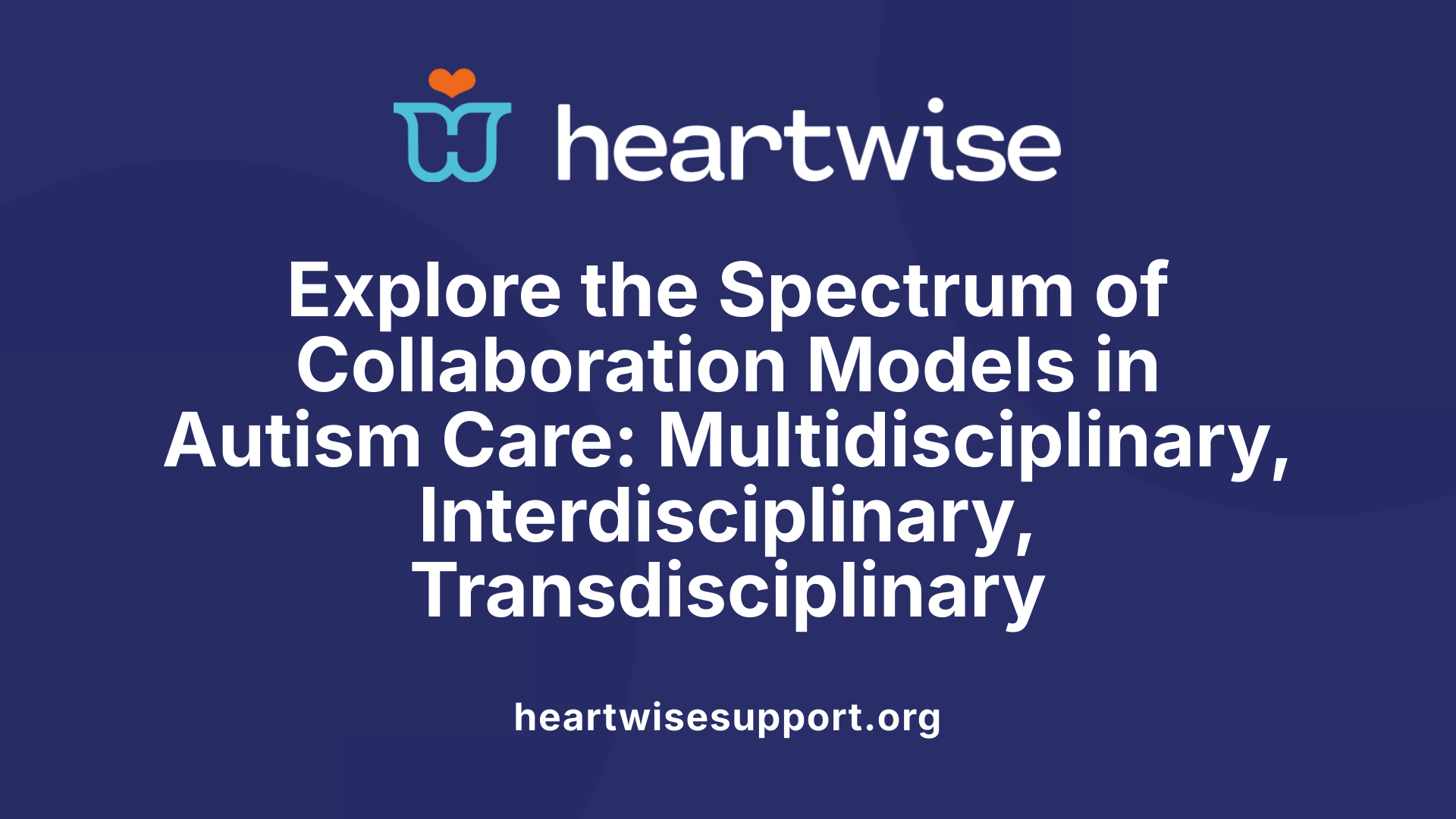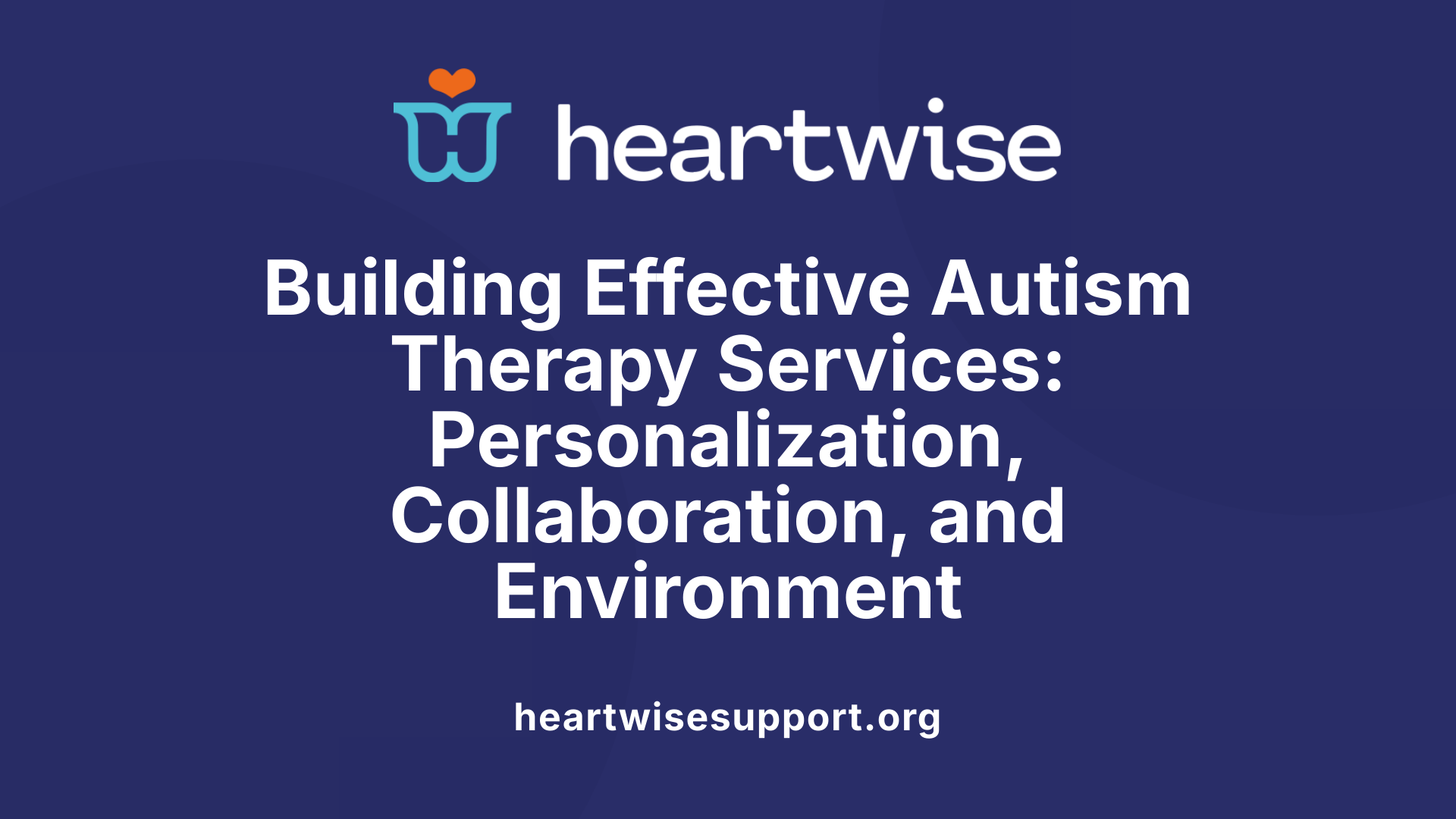The Foundation of Effective Autism Therapy Teams
Building an effective interdisciplinary therapy team for autism care is essential to providing comprehensive, personalized, and evidence-based support for children and adults with autism spectrum disorder (ASD). Success hinges on the deliberate organization, collaboration, and continuous improvement among diverse professionals, families, and support systems. This article explores critical strategies, roles, and best practices to guide the development of therapy teams capable of delivering high-quality autism interventions.
Understanding the Core Components and Roles within Autism Therapy Teams

What roles and components are typically part of autism therapy teams?
Autism therapy teams are composed of a variety of specialized professionals working together to support children with autism. Common members include Board Certified Behavior Analysts (BCBAs), speech-language pathologists, occupational therapists, physical therapists, psychologists, educators, social workers, and medical doctors such as developmental pediatricians or neurologists.
Each professional contributes their unique expertise to develop a tailored, evidence-based intervention plan. For example, BCBAs focus on behavioral strategies and skill acquisition, while speech therapists work on communication improvements, and occupational therapists address sensory or fine motor skills.
These teams can operate via different collaboration models:
- Multidisciplinary: Professionals work independently within their disciplines but share information.
- Interdisciplinary: Team members coordinate actively to develop shared strategies.
- Transdisciplinary: Roles may expand or blend, with professionals sharing responsibilities beyond traditional boundaries.
Effective teamwork involves regular communication, joint planning, and goal setting, ensuring a holistic approach tailored to each child's needs. Family involvement is crucial, as parents and caregivers are trained and supported to reinforce strategies at home, providing consistency and maximizing progress.
Assessment processes like the ADOS-2, ongoing progress monitoring, and planning for major transitions are integral activities. These allow the team to adjust interventions, address emerging challenges, and promote the child's development across different settings.
In essence, a well-coordinated autism therapy team works collaboratively across disciplines, stakeholder involvement, and continuous evaluation to foster meaningful, long-term improvements in a child's social, behavioral, and communication skills.
Models of Interprofessional Collaboration in Autism Care

What are multidisciplinary, interdisciplinary, and transdisciplinary approaches?
In autism care, team collaboration can take various forms, mainly classified into multidisciplinary, interdisciplinary, and transdisciplinary approaches.
- Multidisciplinary teams involve professionals working side by side, each within their discipline. They share information through assessments and meetings but maintain discipline-specific boundaries.
- Interdisciplinary teams integrate expertise across disciplines, combining methods and sharing shared goals to deliver cohesive care.
- Transdisciplinary teams go beyond integration by blending roles and responsibilities, often allowing team members to expand their scope to better serve the individual.
Each model varies by how deeply team activities are intertwined and shared.
Differences in integration levels and shared responsibilities
In multidisciplinary settings, roles are distinct with little overlap, and contributions are additive. Interdisciplinary teams involve more active collaboration, with shared planning, decision-making, and goals. Transdisciplinary approaches fully synthesize skills and roles, sometimes allowing professionals to operate beyond traditional boundaries, such as a behavior analyst implementing some speech techniques.
This progression from separate to highly integrated efforts aims for more cohesive, personalized treatment plans for each individual.
Benefits of collaborative models such as improved client outcomes, resource sharing, and practitioner satisfaction
Employing collaborative approaches offers several advantages:
- Enhanced client outcomes due to comprehensive, well-coordinated interventions that address multiple needs.
- Better resource sharing enables access to diverse expertise and equipment, avoiding duplicated efforts.
- Increased professional satisfaction as team members experience shared responsibility, mutual respect, and continuous learning.
- Consistency in treatment across settings, reinforcing learning and behavior change.
- Family satisfaction increases when care feels unified and responsive to their concerns.
Implementing these models fosters a stronger, more effective autism care system, benefiting children and their families.
Organizing and Structuring Autism Therapy Services

How should autism therapy services be organized and structured?
Effective autism therapy programs are built around personalized approaches that cater directly to each child's unique needs, abilities, and strengths. This means designing intervention plans that consider individual developmental profiles and intended outcomes.
A core element is interdisciplinary collaboration. Professionals such as behavior analysts, speech therapists, occupational therapists, physical therapists, educators, and family members work closely together. Regular communication—through meetings, shared reports, and updates—is vital to coordinate efforts, measure progress, and modify strategies as needed.
Structuring therapy environments to be predictable and sensory-friendly helps children focus and engage more comfortably. Using visual supports, clear routines, minimal clutter, and consistent settings are common practices that create a safe and supportive space for learning.
Different delivery models offer flexibility to meet individual and family needs. In-home services bring therapy directly into the child's daily environment, promoting generalization. Community-based programs facilitate social interactions and real-world skills. School-based services support learning alongside peers, fostering inclusion.
Regular assessments are essential to track progress and ensure interventions remain effective. Family involvement in planning and execution enhances relevance and motivation. Through ongoing collaboration, therapists and families work towards shared goals—improving communication, social skills, independence, and overall quality of life—creating a comprehensive, adaptable, and supportive service structure.
Techniques to Enhance Team Communication and Coordination

What techniques can improve team communication and coordination in autism therapy?
Effective communication and collaboration among professionals are vital for delivering comprehensive autism care. Implementing standardized practices such as regular team meetings, shared documentation, and consistent communication protocols can significantly improve coordination. Regular meetings—held monthly or more frequently—allow team members to discuss progress, update treatment plans, and address challenges.
Shared documentation tools enable all team members to access and update client information, ensuring everyone is informed about recent progress and upcoming goals. Clear role definitions, including the appointment of a case coordinator or lead therapist, help clarify responsibilities and foster accountability.
Promoting a collaborative culture involves continuous education, mutual respect, and shared goals. When professionals from different disciplines understand and value each other's expertise, teamwork becomes more seamless.
Utilizing evidence-based communication strategies—such as visual supports, augmentative and alternative communication (AAC) systems like PECS or speech-generating devices, and social stories—facilitates more effective information exchange. These tools support not only client communication but also team interactions.
To resolve conflicts and strengthen team cohesion, it is important to address disagreements promptly through structured conflict resolution processes. Involving clients and families in decision-making fosters trust, enhances social validity, and helps maintain a client-centered approach.
In sum, leveraging structured communication protocols, clearly defined roles, shared tools, and mutual respect creates a solid foundation for successful autism therapy teams.
Building a Supportive and Effective Leadership Structure
How to assemble and manage interdisciplinary autism therapy teams?
Effective autism therapy teams are built on collaboration, communication, and clear roles. Assembling such a team typically involves a mix of specialists including developmental pediatricians, BCBAs, speech-language pathologists, occupational therapists, physical therapists, and educators. Families often initiate the process by identifying the child's needs and connecting with organizations or providers.
Managing these teams requires fostering a culture of mutual respect and shared goals. Regular team meetings, joint assessments, and shared documentation keep everyone aligned. Using models like transdisciplinary collaboration, where professionals work beyond traditional boundaries, can streamline efforts and enhance integration.
Organizational support is vital. This includes providing ongoing staff training, supervision, and resources. Clear communication channels, including emails, meetings, and digital platforms, ensure continuous coordination. Family involvement also plays a critical role, offering valuable insights and ensuring that interventions are personalized and family-centered.
Through these practices, teams can deliver cohesive, evidence-based interventions tailored to each child's unique needs, leading to better developmental outcomes.
Measuring Success and Continuous Improvement in Autism Therapy Teams
How can you measure success in collaborative autism therapy?
Assessing the effectiveness of a team-based approach to autism therapy involves multiple methods. The primary quantitative measure is the client’s progress, tracked through detailed data collection. This includes monitoring developmental milestones, skill acquisition, behavioral changes, and the achievement of specific goals. Regularly recording these metrics provides clear benchmarks of improvement.
In addition to data, feedback from families and team members plays a crucial role. Families offer insights based on daily observations and experiences, helping to evaluate how well strategies translate into real-world settings. Team feedback reflects the collaboration quality, communication effectiveness, and overall satisfaction.
Periodic review meetings are essential to keep goals relevant and strategies effective. These sessions enable professionals to discuss progress, address challenges, and adjust plans accordingly. Furthermore, ongoing professional development ensures that all team members stay current with the latest evidence-based practices, which further enhances therapy quality.
Successful autism therapy teams balance data-driven assessments with qualitative insights, fostering an adaptable and responsive treatment environment. This comprehensive approach helps ensure children receive the most effective, coordinated care possible.
Fostering Continuous Growth and Collaboration in Autism Care
Creating an effective autism therapy team is a dynamic process that requires intentional planning, transparent communication, and ongoing evaluation. Emphasizing clear roles, shared goals, structured collaboration, and expertise sharing fosters an environment where children and adults with autism can thrive. By investing in team training, organizational support, and family involvement, organizations can build resilient, skilled, and cohesive teams committed to delivering high-quality, individualized autism care. The future of autism intervention depends on continuous innovation, cross-disciplinary learning, and a shared dedication to enhancing lives through effective team collaboration.
References
- How To Take A Collaborative Approach With Your Care Team
- Assembling your team after an autism diagnosis
- Standards for Interprofessional Collaboration in the Treatment of ...
- A Multidisciplinary, Family-Centered Approach to Autism
- Description of the Treatment Team
- Building a Collaborative Team for Effective ABA Therapy
- It Takes a Team: 4 Steps to Building a Stronger Therapy Team - Blog
- Tips for Coordinating Between Multiple Therapy Providers in ABA ...











